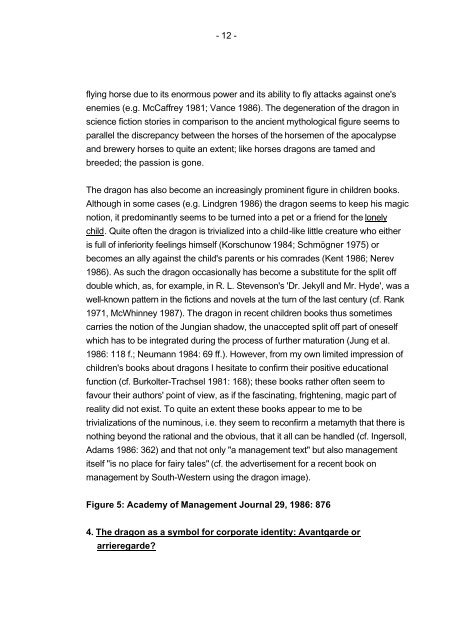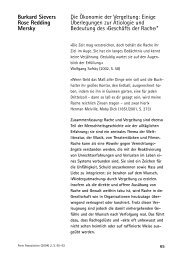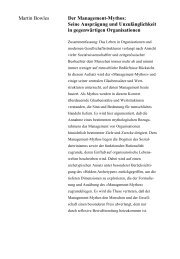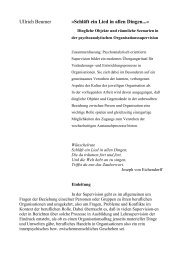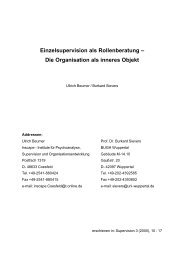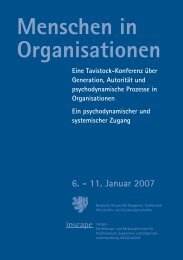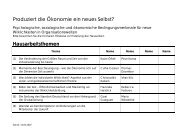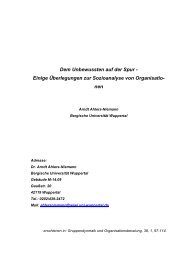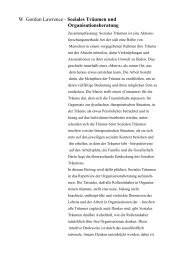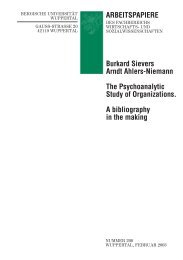Curing the monster Some images of and considerations - Prof. Dr ...
Curing the monster Some images of and considerations - Prof. Dr ...
Curing the monster Some images of and considerations - Prof. Dr ...
You also want an ePaper? Increase the reach of your titles
YUMPU automatically turns print PDFs into web optimized ePapers that Google loves.
- 12 -<br />
flying horse due to its enormous power <strong>and</strong> its ability to fly attacks against one's<br />
enemies (e.g. McCaffrey 1981; Vance 1986). The degeneration <strong>of</strong> <strong>the</strong> dragon in<br />
science fiction stories in comparison to <strong>the</strong> ancient mythological figure seems to<br />
parallel <strong>the</strong> discrepancy between <strong>the</strong> horses <strong>of</strong> <strong>the</strong> horsemen <strong>of</strong> <strong>the</strong> apocalypse<br />
<strong>and</strong> brewery horses to quite an extent; like horses dragons are tamed <strong>and</strong><br />
breeded; <strong>the</strong> passion is gone.<br />
The dragon has also become an increasingly prominent figure in children books.<br />
Although in some cases (e.g. Lindgren 1986) <strong>the</strong> dragon seems to keep his magic<br />
notion, it predominantly seems to be turned into a pet or a friend for <strong>the</strong> lonely<br />
child. Quite <strong>of</strong>ten <strong>the</strong> dragon is trivialized into a child-like little creature who ei<strong>the</strong>r<br />
is full <strong>of</strong> inferiority feelings himself (Korschunow 1984; Schmögner 1975) or<br />
becomes an ally against <strong>the</strong> child's parents or his comrades (Kent 1986; Nerev<br />
1986). As such <strong>the</strong> dragon occasionally has become a substitute for <strong>the</strong> split <strong>of</strong>f<br />
double which, as, for example, in R. L. Stevenson's '<strong>Dr</strong>. Jekyll <strong>and</strong> Mr. Hyde', was a<br />
well-known pattern in <strong>the</strong> fictions <strong>and</strong> novels at <strong>the</strong> turn <strong>of</strong> <strong>the</strong> last century (cf. Rank<br />
1971, McWhinney 1987). The dragon in recent children books thus sometimes<br />
carries <strong>the</strong> notion <strong>of</strong> <strong>the</strong> Jungian shadow, <strong>the</strong> unaccepted split <strong>of</strong>f part <strong>of</strong> oneself<br />
which has to be integrated during <strong>the</strong> process <strong>of</strong> fur<strong>the</strong>r maturation (Jung et al.<br />
1986: 118 f.; Neumann 1984: 69 ff.). However, from my own limited impression <strong>of</strong><br />
children's books about dragons I hesitate to confirm <strong>the</strong>ir positive educational<br />
function (cf. Burkolter-Trachsel 1981: 168); <strong>the</strong>se books ra<strong>the</strong>r <strong>of</strong>ten seem to<br />
favour <strong>the</strong>ir authors' point <strong>of</strong> view, as if <strong>the</strong> fascinating, frightening, magic part <strong>of</strong><br />
reality did not exist. To quite an extent <strong>the</strong>se books appear to me to be<br />
trivializations <strong>of</strong> <strong>the</strong> numinous, i.e. <strong>the</strong>y seem to reconfirm a metamyth that <strong>the</strong>re is<br />
nothing beyond <strong>the</strong> rational <strong>and</strong> <strong>the</strong> obvious, that it all can be h<strong>and</strong>led (cf. Ingersoll,<br />
Adams 1986: 362) <strong>and</strong> that not only "a management text" but also management<br />
itself "is no place for fairy tales" (cf. <strong>the</strong> advertisement for a recent book on<br />
management by South-Western using <strong>the</strong> dragon image).<br />
Figure 5: Academy <strong>of</strong> Management Journal 29, 1986: 876<br />
4. The dragon as a symbol for corporate identity: Avantgarde or<br />
arrieregarde?


